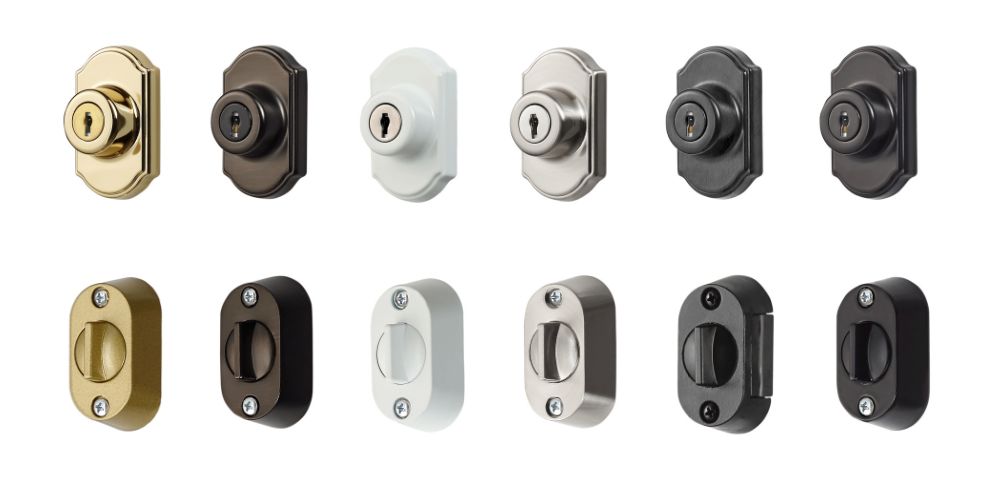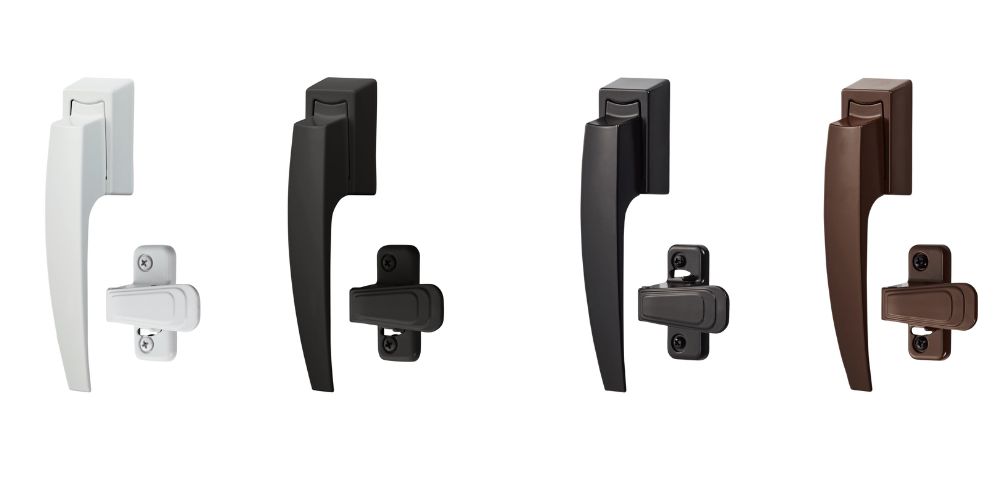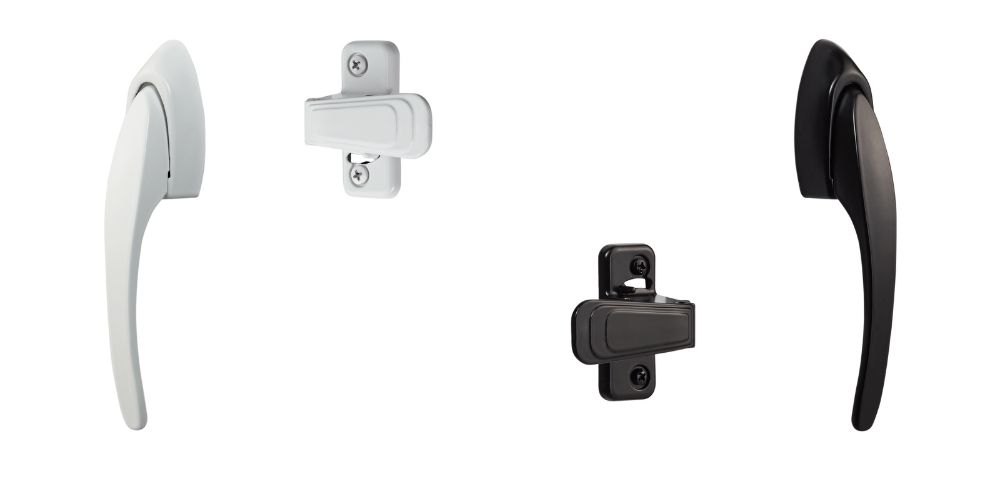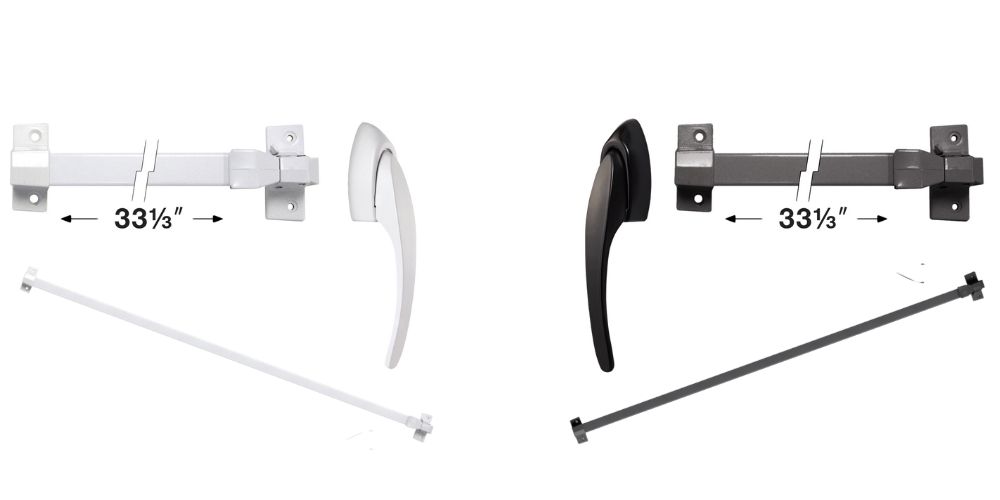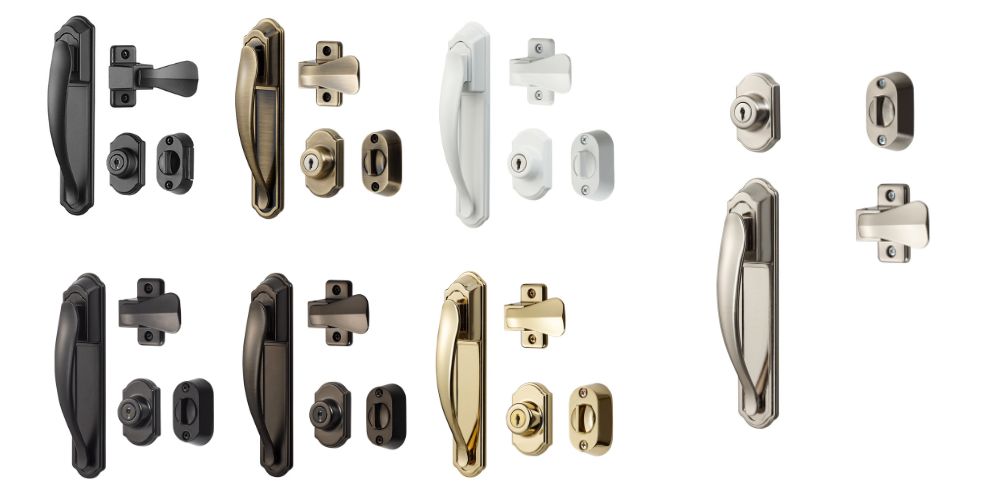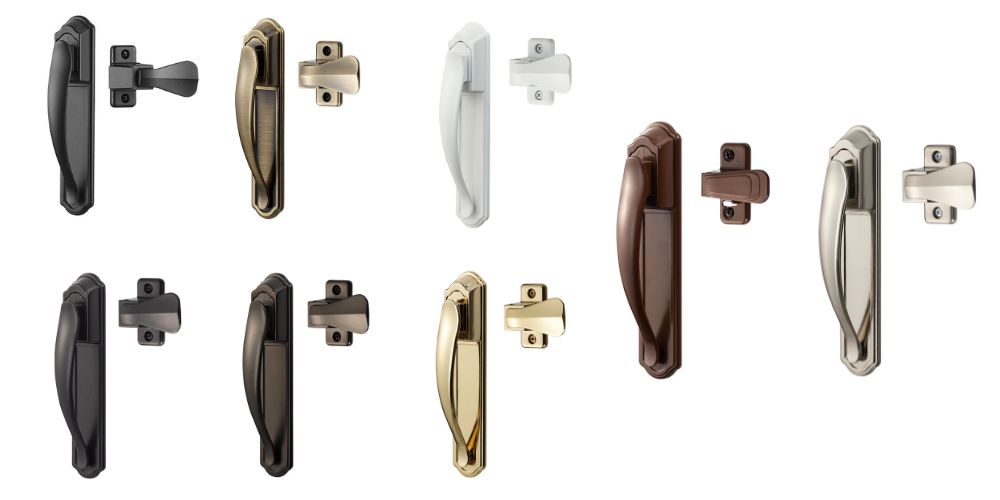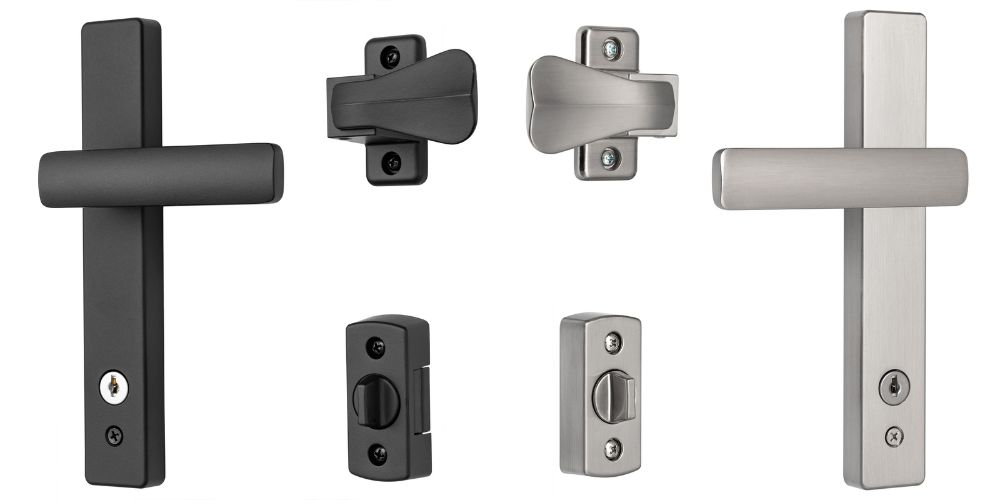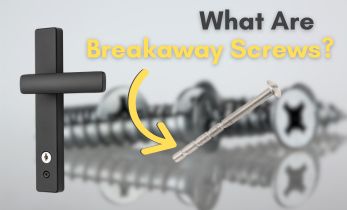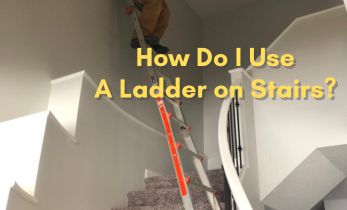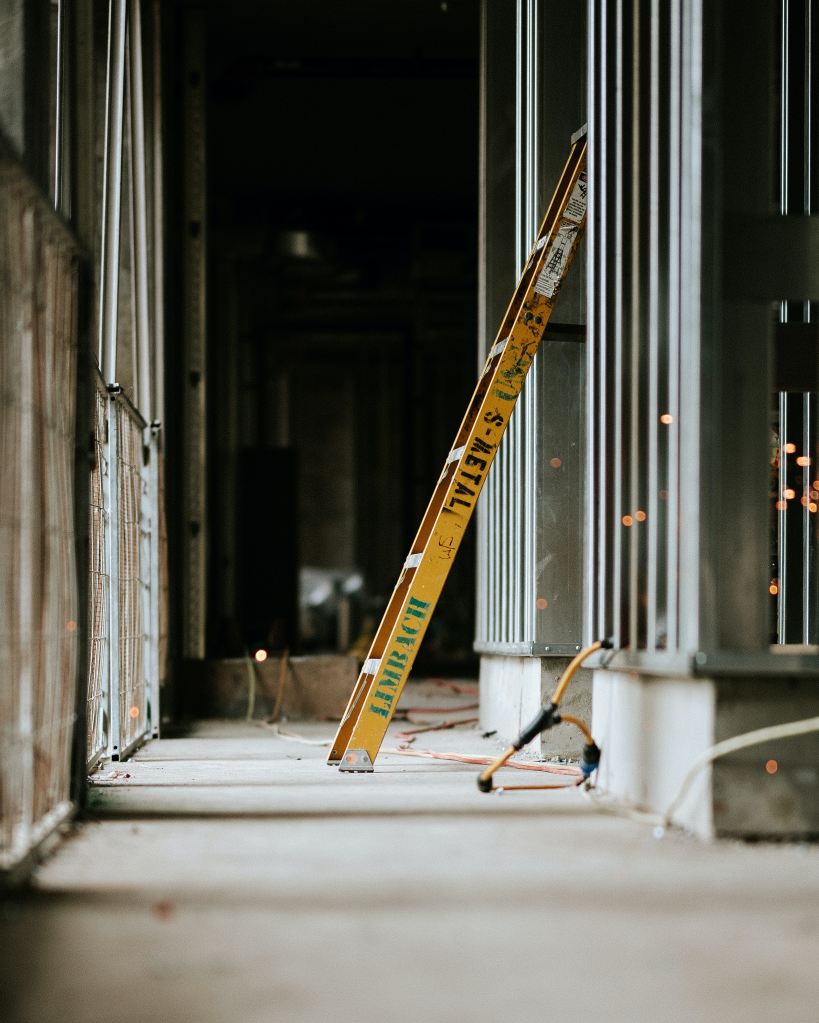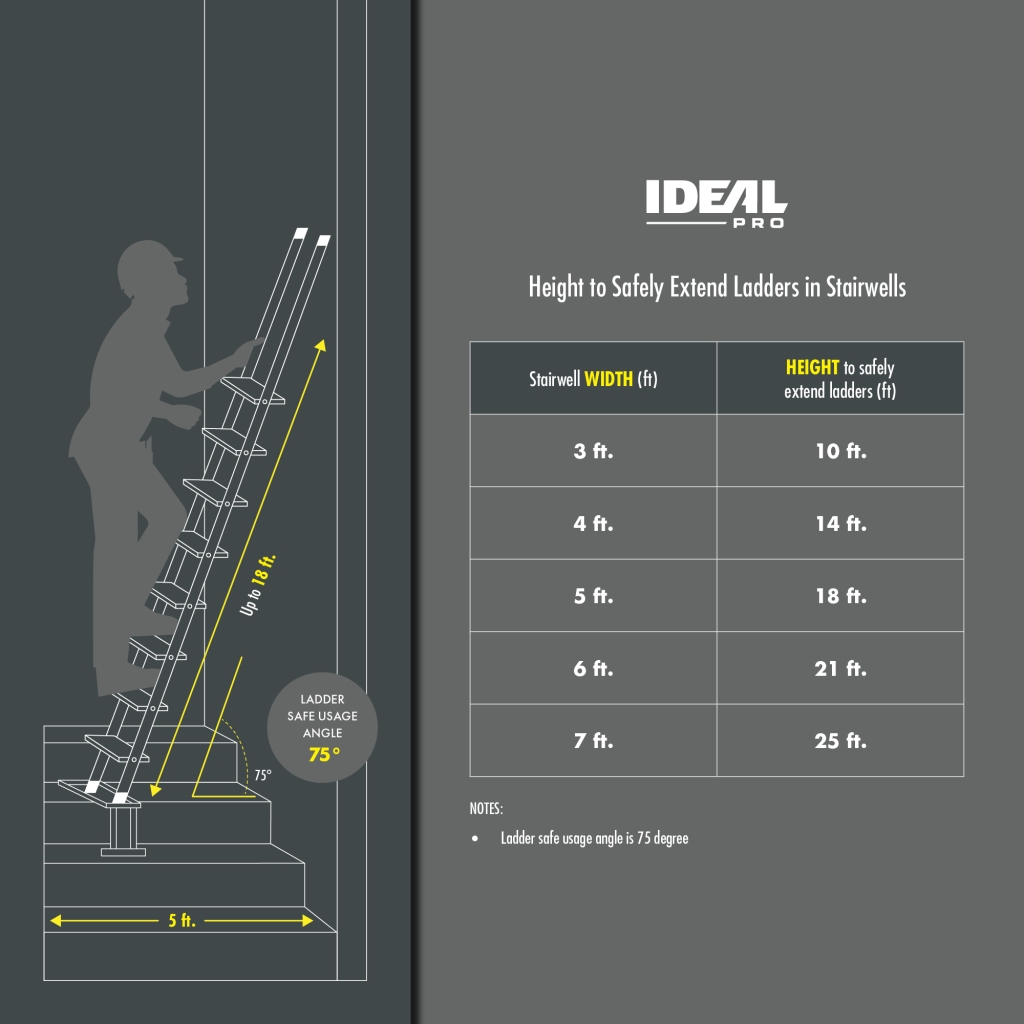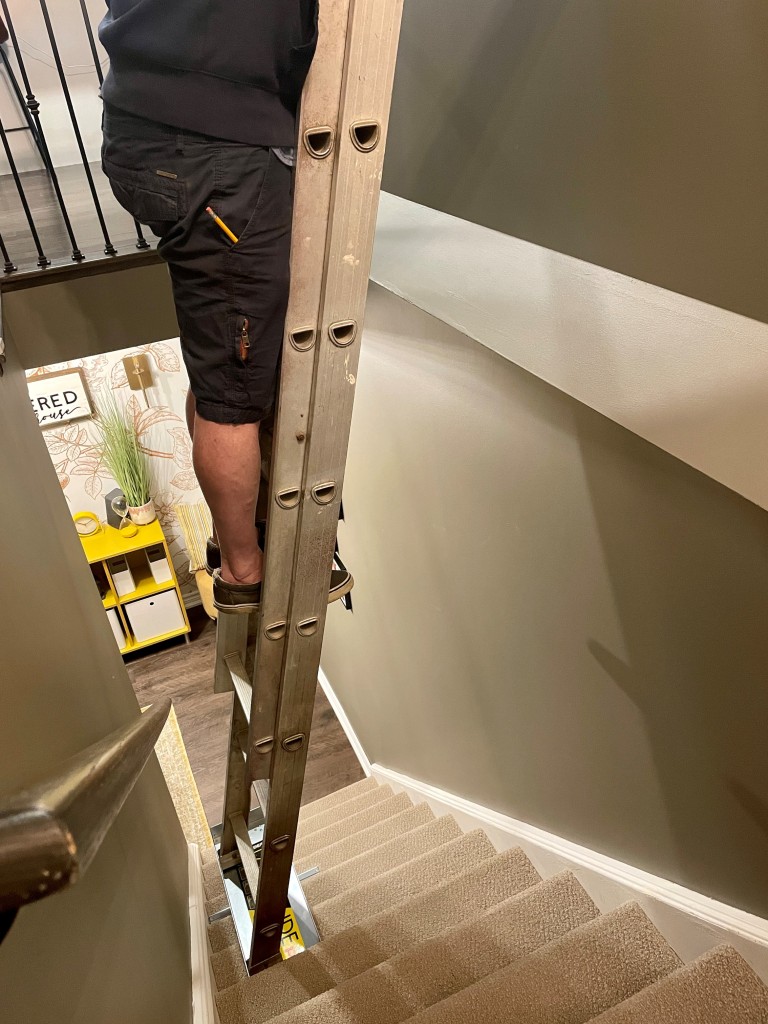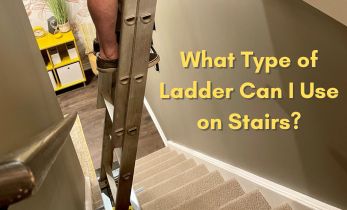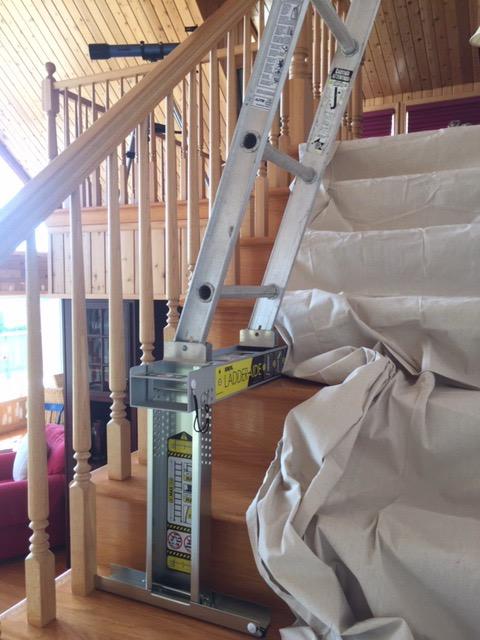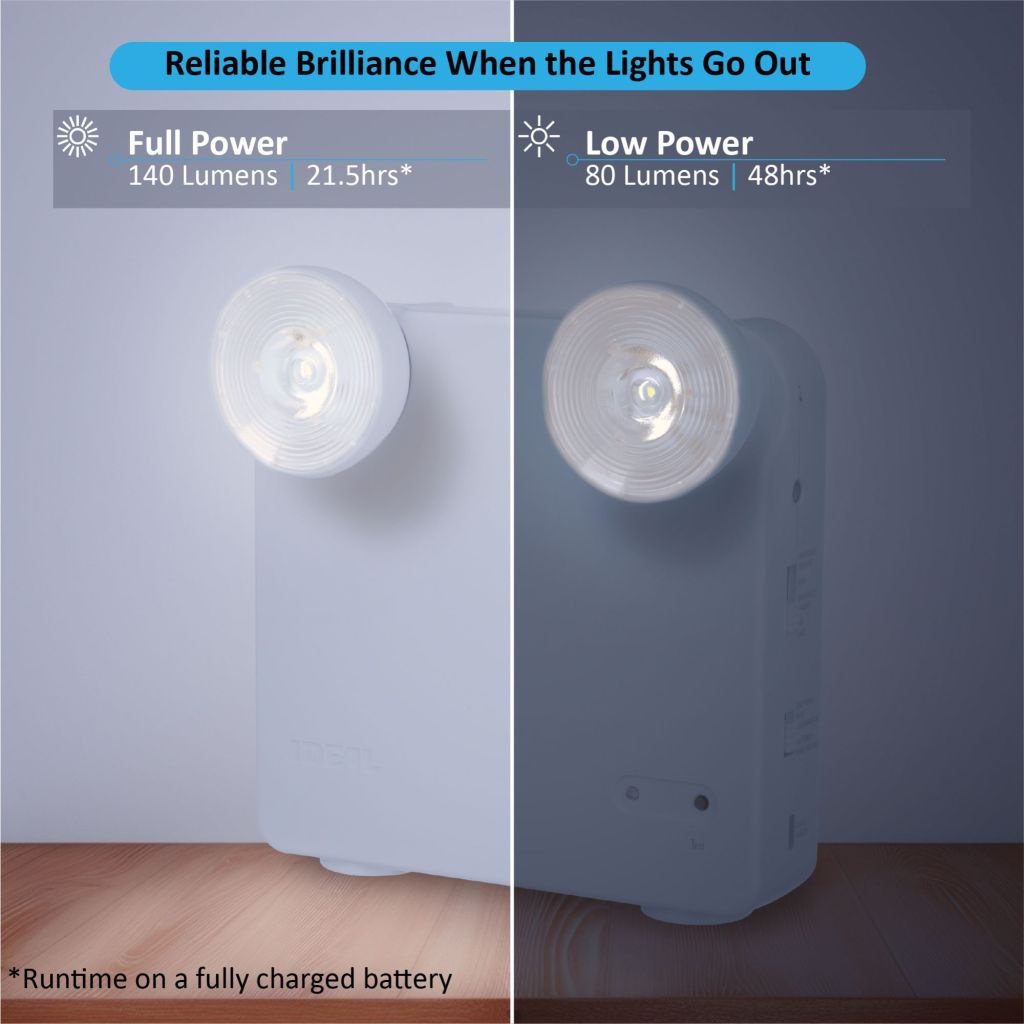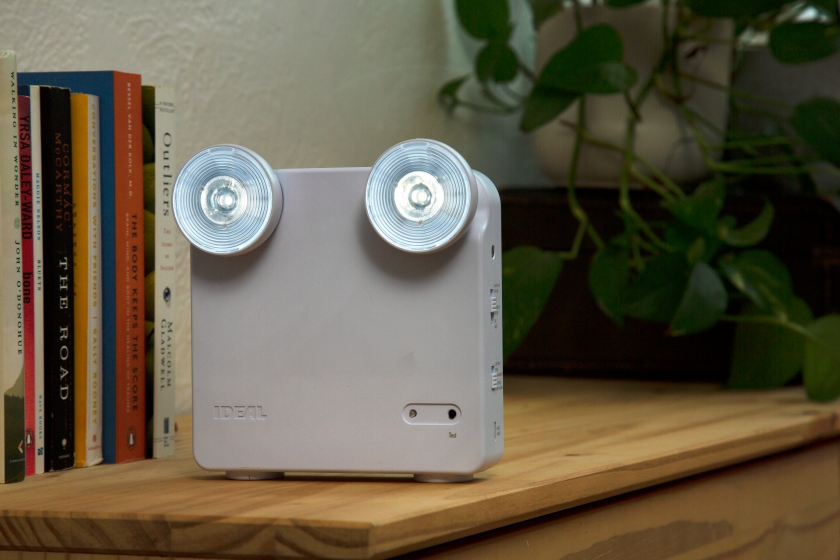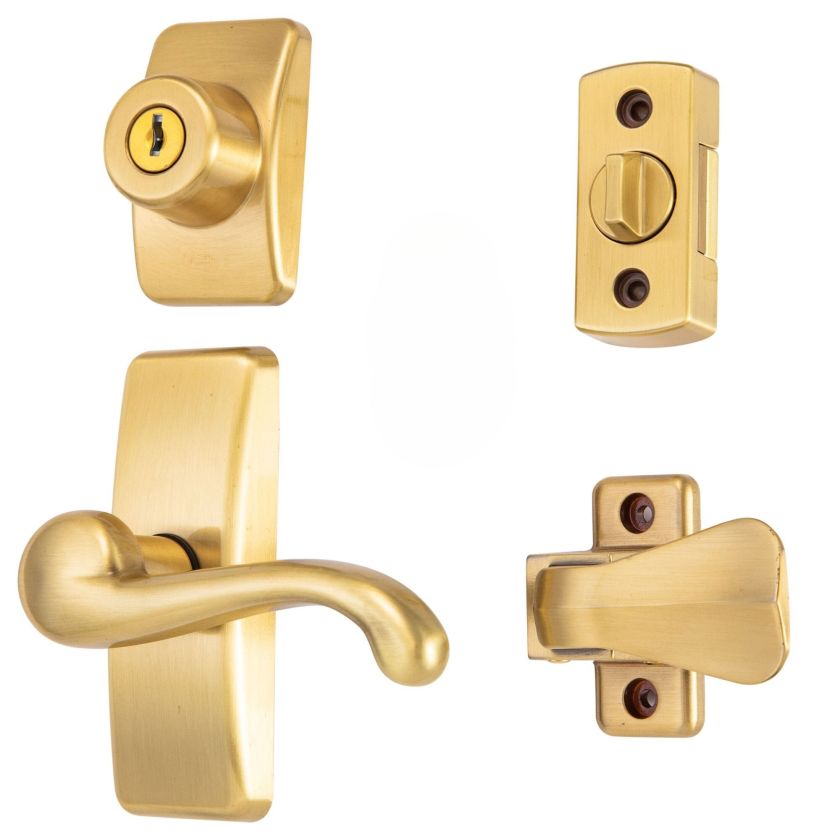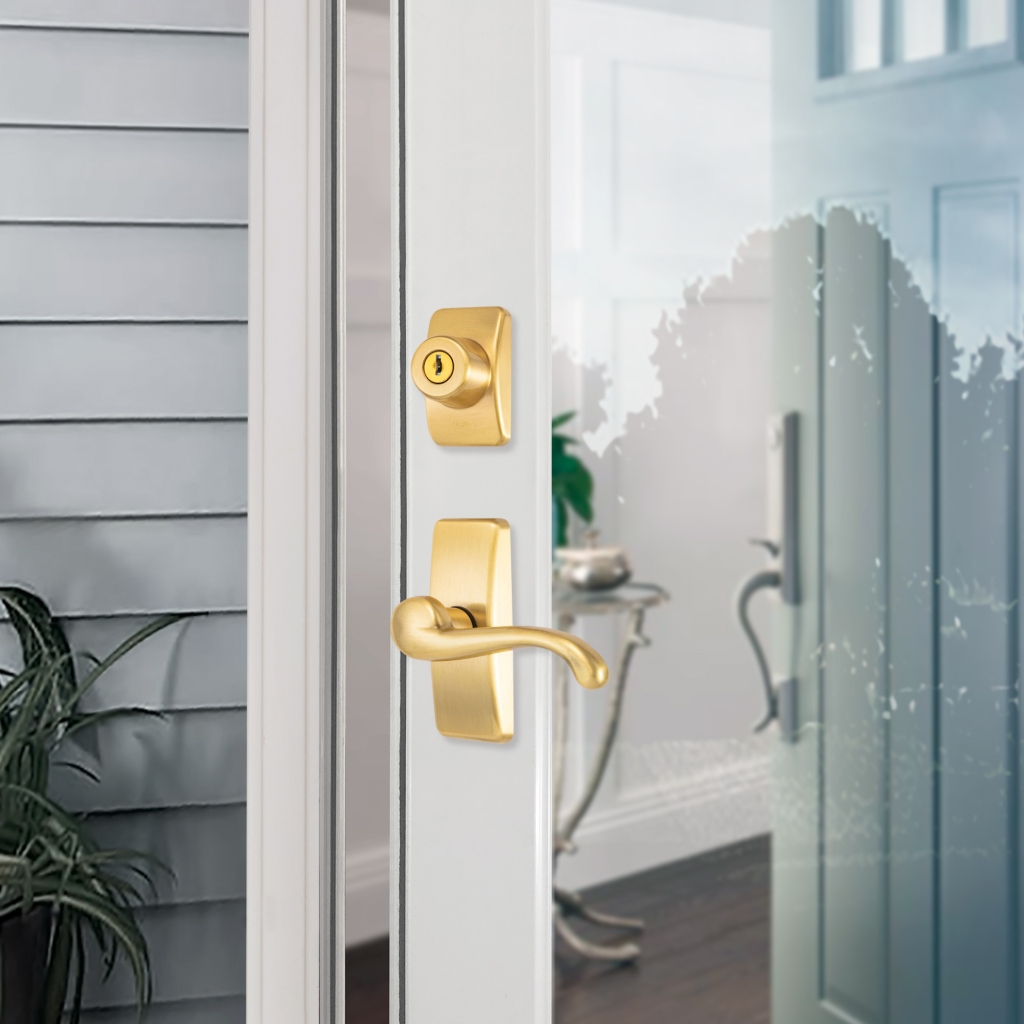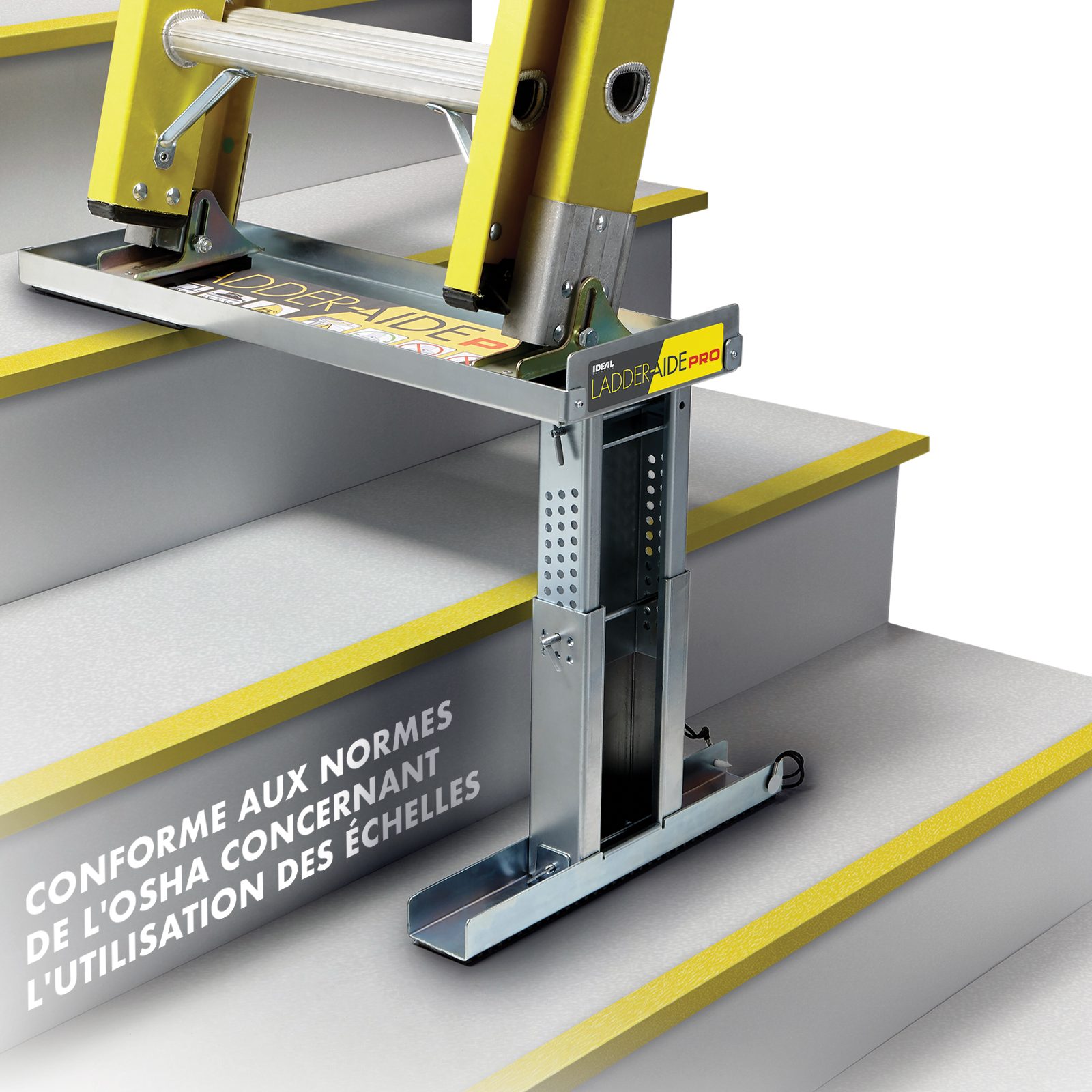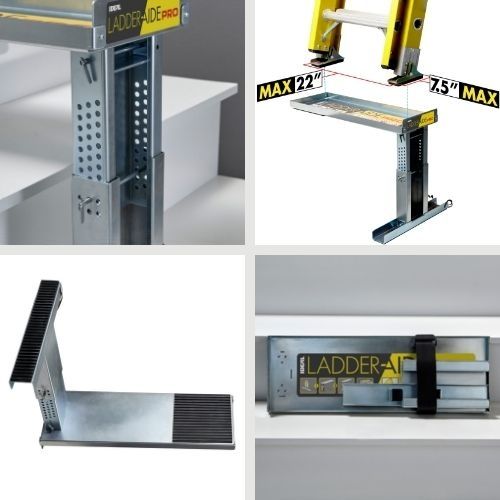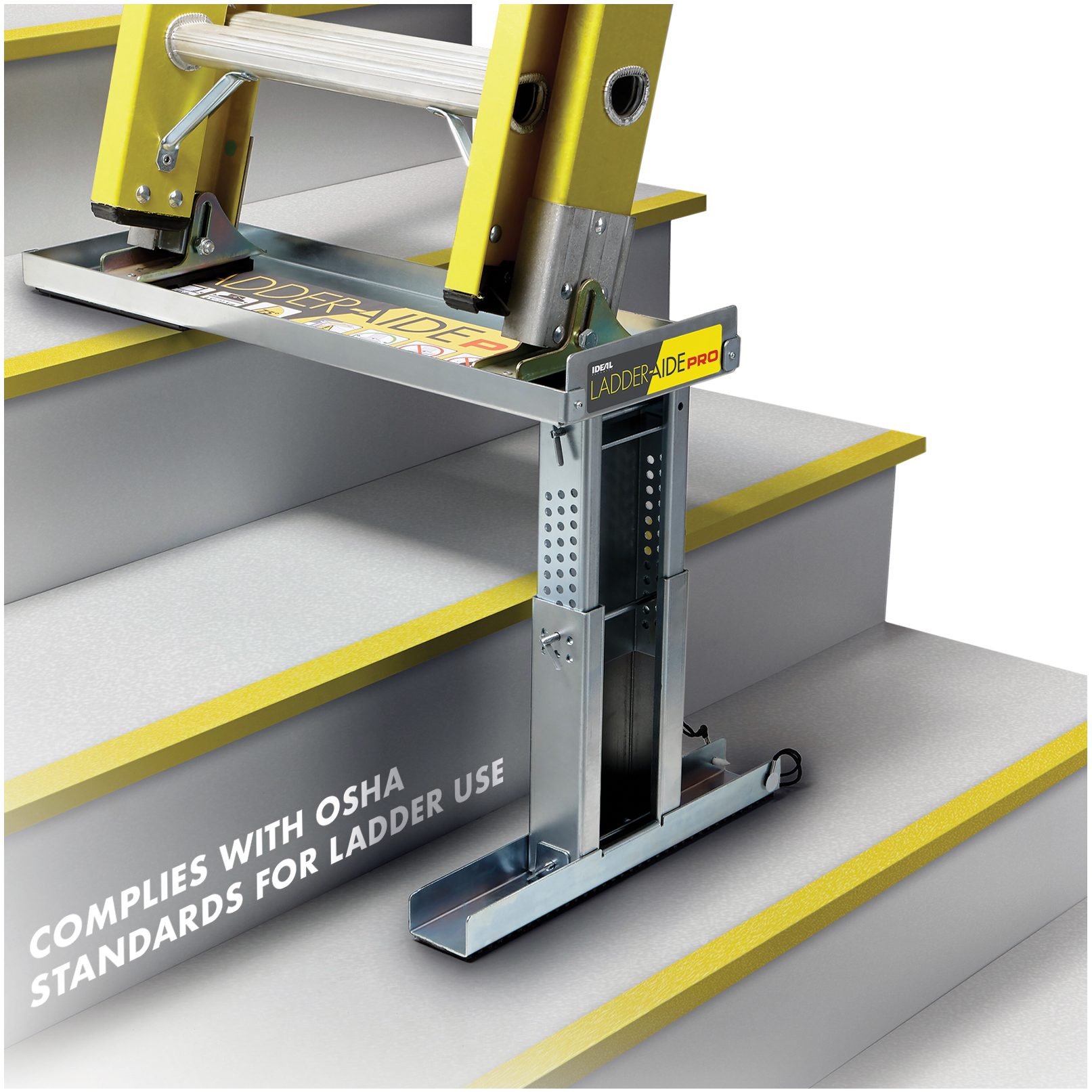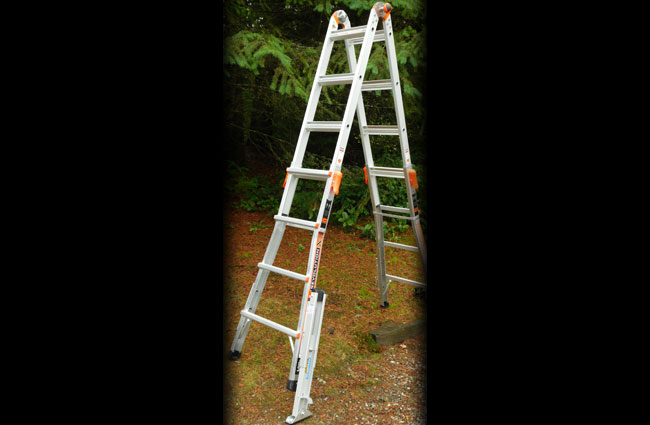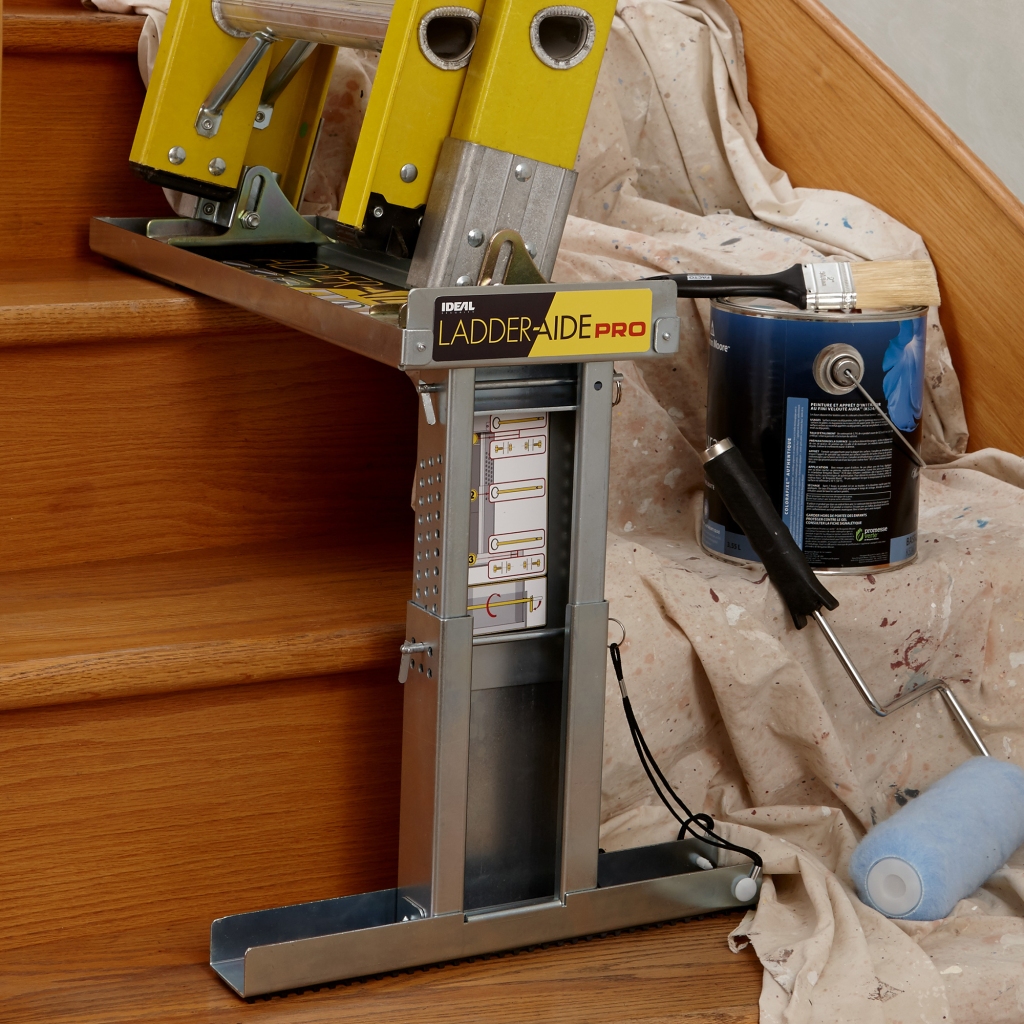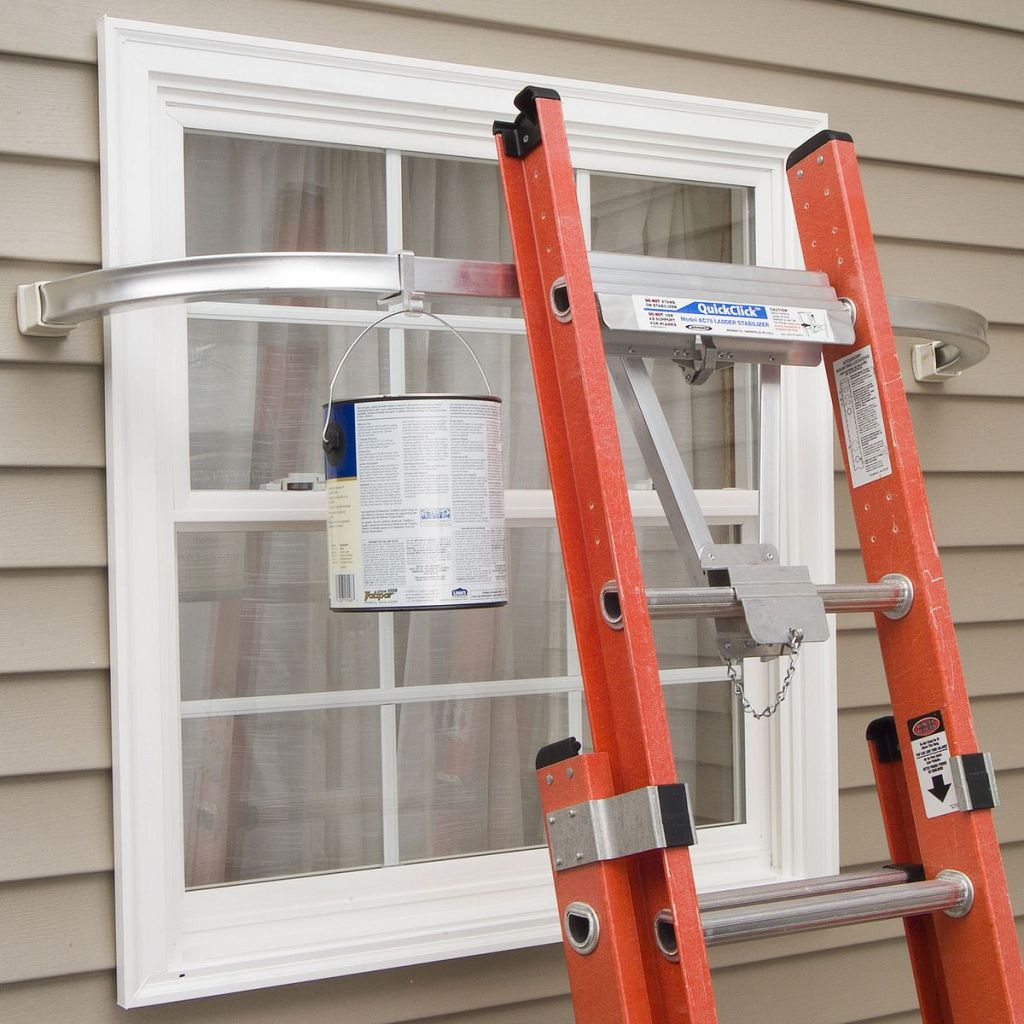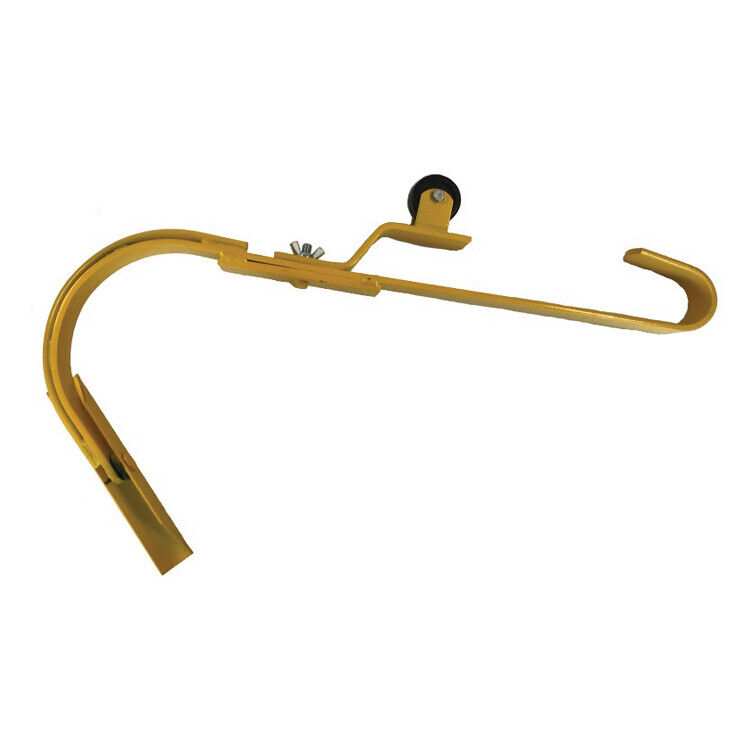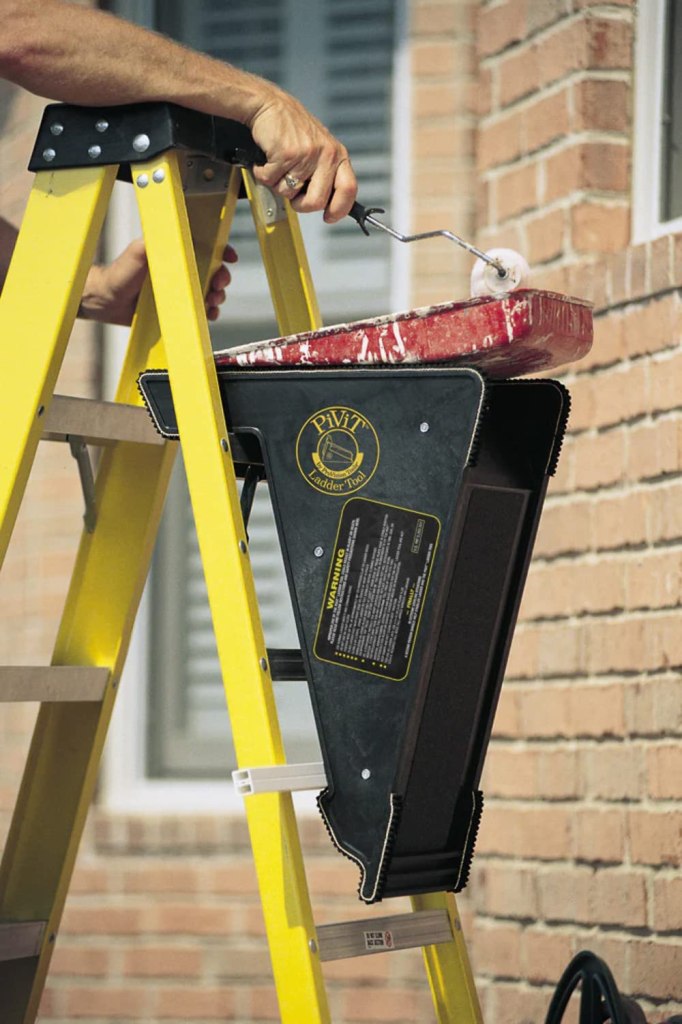Sometimes, you’ll find a spot above the stairs that you just can’t quite reach. Maybe it’s to repaint one off-color corner, hang up a painting, or perform HVAC work. In times like these, the only solution is to use a ladder on stairs.
Read on, and we’ll walk you through the best types of ladders to use on stairs and a quick breakdown of ladder types.
When you’re done, come on back and learn how you can use a ladder on staircases without relying on bulky, time-consuming, and potentially risky staircase scaffolding.
The Safest Ladders to Use on Stairs
First and foremost: do not use single-rail ladders. According to OSHA (1926.1053(b)(21)), that is a hard and fast rule, regardless of whether or not you plan to use a ladder on stairs.
With that out of the way, there are a surprising number of ladders that can be used on stairs. From combination ladders to extension ladders, most types of ladders can be used on stairs conditionally. Some ladders have integrated mechanisms that allow the adjustment of individual legs to provide level heights for staircase use, while others require the use of accessories and ladder stabilizers. Even ladders that are exclusively made to be used on stairs come with some conditions and caveats, so be sure to thoroughly review any documentation that comes with your ladder to determine the ideal usage conditions.
Below, we’ll go over the general ladder types that can be used on stairs to help you make informed purchasing and ladder-use decisions. If there’s a ladder type missing from this list that you think works well on stairs, let us know!
Single Ladders
Tried, tested, and true, single ladders come with no flourishes or frills. Requiring no additional tools for general use, relying steadily on their anti-slip feet and the support of the surface it’s placed against, single ladders come in various heights ranging from 10 feet to over 30 feet. Note that single ladder height is not adjustable. Be sure to check the required height needed for your project before purchasing a ladder.
While ladder height was commonly used as an indicator of weight capacity (the taller the ladder, the more weight it could support), that is not a reliable metric nowadays. Some single ladders as short as 10 feet are capable of supporting up to 300lbs.
Note that you’re not necessarily better off by buying the tallest ladder available! As noted by the American Ladder Institute, using a 14-foot ladder makes working on the surface of a wall around the 10-foot mark problematic, due to the 1 in 4 rule. Click here to learn about the 1 in 4 rule, which determines the amount of space needed to safely use a ladder depending on its height.
Accessories / Tools needed to use on stairs: Yes.
Extension Ladders
Exactly as the name implies, extension ladders… extend. That may not sound particularly exciting at first, but extension ladders offer a great deal of versatility that you’d otherwise miss out on with a single ladder.
Coming in with two to three adjustable telescopic sections, extension ladders can reach heights up to 40 feet, if not higher. Unlike their limited single ladder counterparts, extension ladders are generally not restrained to their maximum height, but can rather be incrementally adjusted and held in place with rung locks. Some extension ladders come equipped with a rope and pulley system to help set the telescopic sections in place.
To use an extension ladder on stairs, you’ll need to employ the use of ladder accessories and leveling tools. Like single ladders, extension ladders meet regulations for the use of levelers and stabilizers to balance out uneven surfaces, making them viable candidates for use on stairwells and sloped surfaces. With the right ladder accessory or ladder leveler, you’ll have a suitable adjustable ladder for stairs in no time.
Note that this adjustable height doesn’t necessarily free extension ladders from the 1 in 4 rule, and extension ladders are not a “one-size-fits-all” tool. If you are using an extension ladder like the aforementioned 40-footer, that means the base, unextended ladder is going to be at least 20 feet tall; trying to reach the surface of a wall at or below the 16-foot mark will be a risky endeavor.
Accessories / Tools needed to use on stairs: Yes.
Combination Ladders
Bringing in the best of both worlds, combination ladders can act as stepladders, extension ladders, or single ladders, making them a unique and essential tool on a job site with various ladder requirements.
While the stepladder aspect of a combination tool cannot be used on stairs, the single ladder and extension ladder configurations can be used as described in the two previous sections. Be sure to check the manual and guidelines that come with your combination ladder for specific use case requirements.
To facilitate the single-step-extension ladder combo, combination ladders generally operate with a series of locking joints. When using your ladder in any one of the three configurations, ensure that all necessary joints are properly locked in place – the last thing you want is for your stepladder to suddenly turn into a single ladder while in use.
Accessories / Tools needed to use on stairs: Yes.
Articulating Ladders
Articulating ladders, also known as multi-position ladders or multi-purpose ladders, break the mold when it comes to ladders. Best described as a jack of all trades, articulating ladders, through a series of moving hinges, can transform into single ladders, extension ladders, stepladders, stair ladders, and potentially more. Some articulating ladders feature independently adjustable legs, meaning you may even be able to configure them to step ladders for stairs.
Discussing articulating ladders can be a bit challenging, as every manufacturer may aim for something different with their own ladders. Some multi-purpose ladders may be able to transform into ladders for stairways out the box, while others may still require the use of ladder levelers and stabilizers. Be sure to follow the manufacturer’s guidelines for ladder usage, and avoid MacGyvering your ladder to adapt to situations it’s not intended for.
The same rules apply nonetheless; one size does not fit all, mind the 1 in 4, make sure the feet are properly grounded, and ensure all hinges are properly locked. Additionally, with the number of hinges and varied use cases of a multi-position ladder, take extra care in checking your ladder for defects from wear and tear.
For more safety tips on using articulating ladders, be sure to check out the American National Standards Institute’s blog.
Accessories / Tools needed to use on stairs: Sometimes.
And more…
Undoubtedly, there are some specialty ladders for stairs, or interesting combinations of ingenuity and stubbornness to get the job done. However, official safety regulation tends to dissuade against these homemade remedies, and we’re inclined to agree with the folks over at OSHA and ANSI.
It’s no exaggeration to say that using a ladder can be dangerous in certain circumstances, and doubly so can be said if you’re using a ladder on stairs. It can be done, and there are safety measures in place to do so properly. It’s just a matter of actually following those regulations, doing some research, and investing in the right tools for your safety.
What Are Ladder Types?
Now that we’ve gone over the best ladders to use on stairs, we’ll quickly touch on ladder types, or ladder duty ratings.
There are five accepted and commonly used ladder duty ratings to familiarize yourself with. They are, from least weight capacity to most weight capacity:
- Type III
- Type II
- Type I
- Type IA
- Type IAA
Ladder duty ratings indicate the weight that a ladder is capable of supporting. This includes the weight of the person using the ladder, the weight of the tools in use, and the weight of the equipment being worn. For the safest ladder usage, these combined weights should be less than your ladder’s maximum weight capacity.
In addition to determining the correct ladder height for a job, you should consider the application of the job, the site, and the working load you’ll be putting your ladder through. For example, Type III ladders are generally best regarded for household applications and simple tasks.
It doesn’t stop there. If you’re using ladder accessories and leveling tools, you must also consider their weight capacities, taking into account the weight of the ladder itself atop the previously mentioned factors. Optimally, you should aim to use tools that can support up to 4x the weight capacity of your ladder.
Interested to learn more? We’ve got you covered. Check out this blog post to learn about the various types of ladder accessories and tools at your disposal to use ladders on uneven surfaces, roofs, and stairs.
